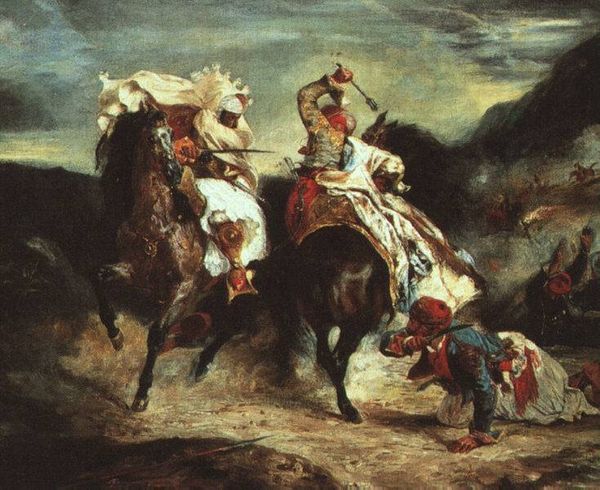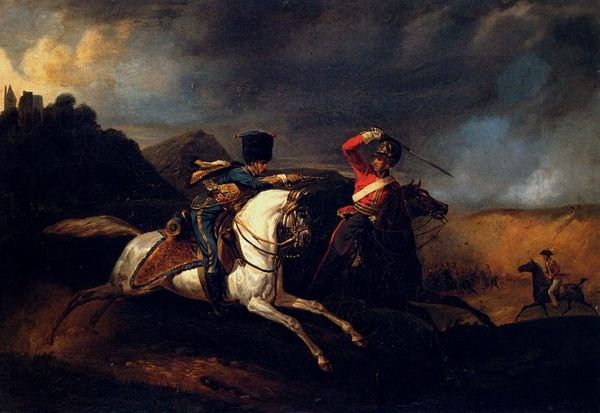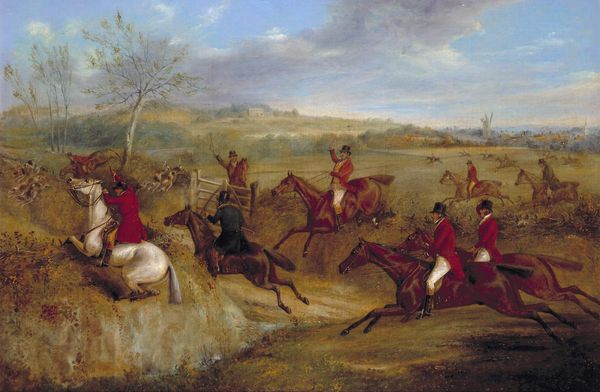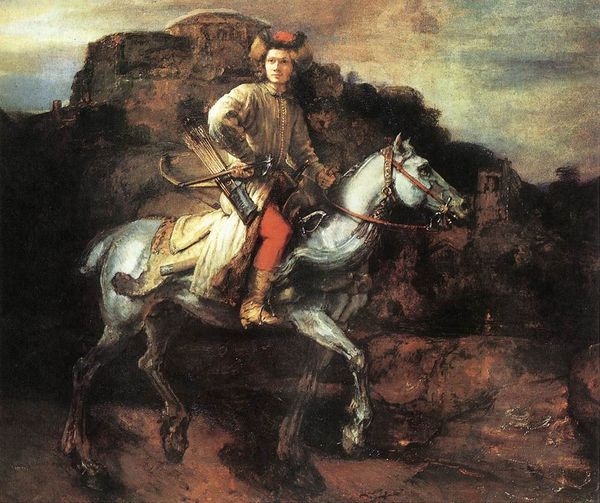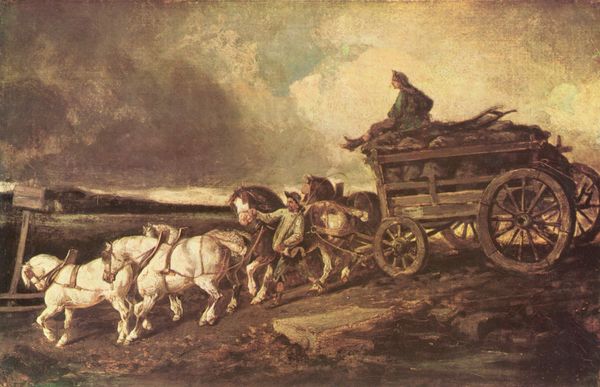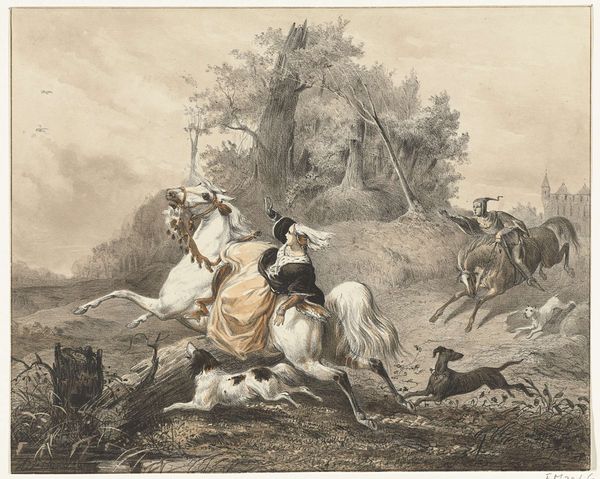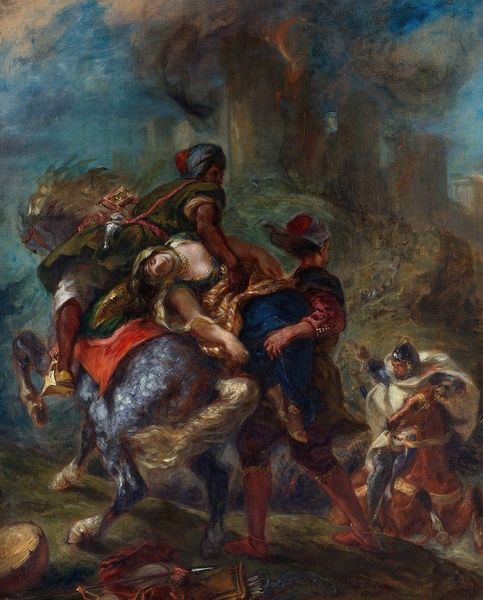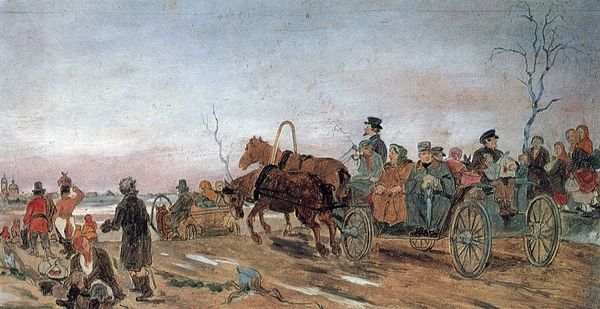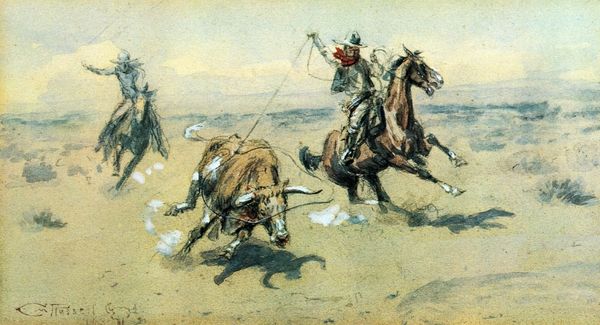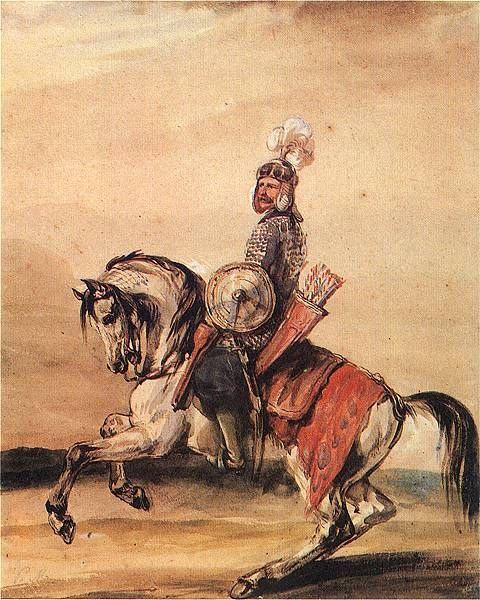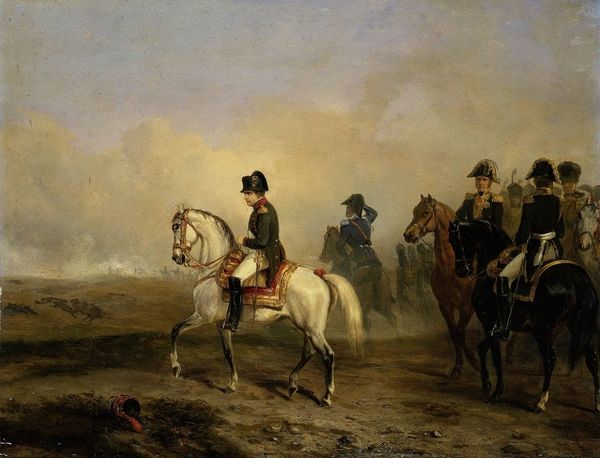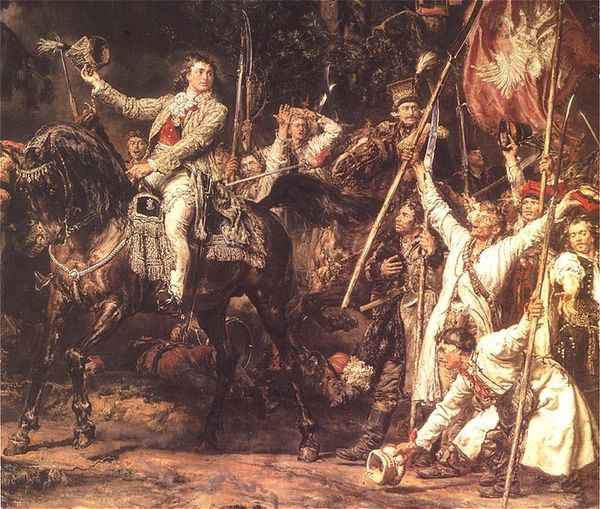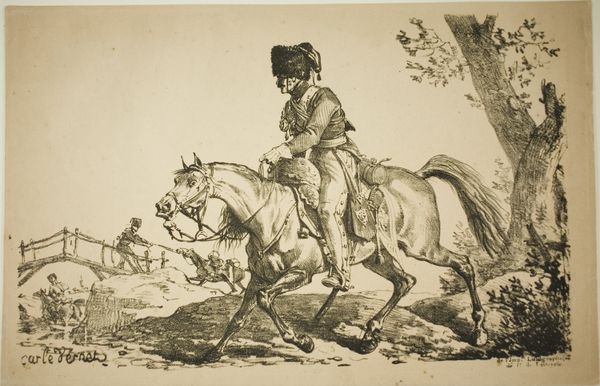
Copyright: Public domain
Curator: Here we have Gustave Moreau's watercolor and oil painting "Two Modern Horsewomen," created in 1852. Editor: My initial impression is one of melancholy, almost as if the two figures are caught in a transient, uncertain moment. It has the visual weight of Romanticism. Curator: Absolutely, and the landscape underscores that sentiment. The very fact that these are "modern" horsewomen is a loaded statement. Think about what riding, what land ownership, meant for women’s roles and social mobility during the 19th century. How does it subtly challenge prevailing social hierarchies? Editor: I'm intrigued by the medium, watercolor, and oil. Watercolor gives it a dreamlike ethereality, while oil likely adds depth to the figures and landscape. What does it tell us about artistic experimentation or access to these different materials in that period? Curator: Excellent point. The mixing of materials allows us to ask questions about how art training intersected with available materials and the evolving concept of what constituted "high art" versus craft. Editor: The horses also seem crucial here. These aren't just modes of transport; they signify wealth, leisure, power—and all those attributes would reflect directly on the gender dynamics, right? Curator: Precisely. Consider the labor required to breed, train, and care for such animals. Those are class divisions visualized, unspoken assumptions about resources that buttress the scene itself. Even the depiction of animals adds context to those themes. Editor: It definitely opens a discussion of societal complexities and the layered meanings within the imagery, not just the artistry, itself. I'm glad we unpacked this one. Curator: Me too. Examining Moreau’s "Two Modern Horsewomen" has given us a lens into the material conditions, social constraints, and the potential for individual empowerment present in mid-19th-century society.
Comments
No comments
Be the first to comment and join the conversation on the ultimate creative platform.
